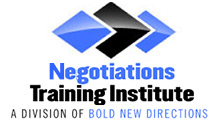In order for any negotiation to be successful, both parties have to agree that there is some range of possible outcomes that all parties would be willing to accept. This agreeable range of compromise is called the Zone of Possible Agreement, or ZOPA. Understanding what a ZOPA is can help you improve negotiation skills and navigate discussions in order to maximize the potential for reaching a successful agreement.
What is the ZOPA?
The ZOPA represents a range of possible agreements that are acceptable to both parties in a negotiation. For example, is Party A is willing to sell a product for $50-$70 and Party B is willing to buy the product for $60-$80, the ZOPA would be between $60-$70, where both parties can find common ground and reach a mutually beneficial agreement. Once the negotiating parties have successfully identified this bargaining zone, the rest of the negotiation would most likely consist of narrowing it down until they reach a compromise.
How to Identify the ZOPA?
In order to identify the ZOPA, negotiators must engage in effective communication and be active listeners in order to determine the needs and priorities of the other party. By understanding the needs of the other party, negotiators can identify opportunities for value creation, make concessions, or compromise in order to bridge the gap between both parties and find common ground.
It is important for negotiators to be flexible and adaptive in their approach in order to maximize the potential for identifying the ZOPA and reaching a successful outcome. By being open to exploring different options and considering alternatives, negotiators can expand their ZOPA and create opportunities for reaching an agreement that satisfies both parties.
Understanding the ZOPA is essential for negotiators in order to navigate discussions more effectively and reach mutually beneficial outcomes. By identifying the range of possible outcomes that are acceptable to both parties, negotiators can focus on finding common ground and working toward a successful resolution. By becoming effective communicators, actively listening to the needs of the other party, and creatively problem-solving, negotiators can expand the ZOPA, create value, and reach agreements that meet the needs of both parties. If you want to learn more about how to identify and leverage the ZOPA in negotiations, sign up for our Negotiation Training courses. Our courses will help you understand the ZOPA and explore strategies for using this technique to become a more effective negotiator. Call today to learn more about our negotiation training courses!
